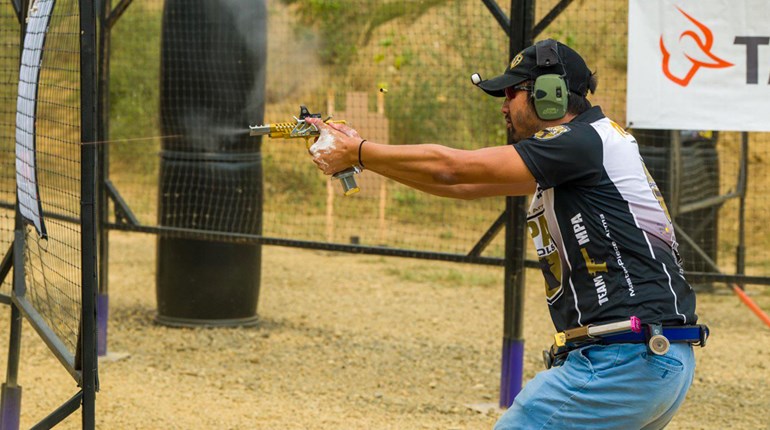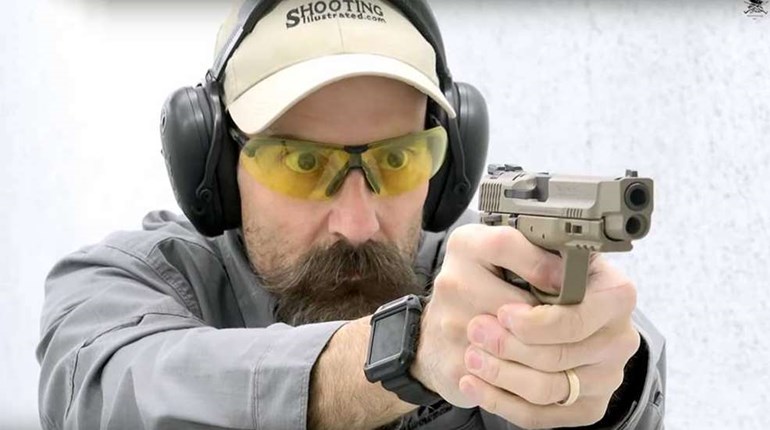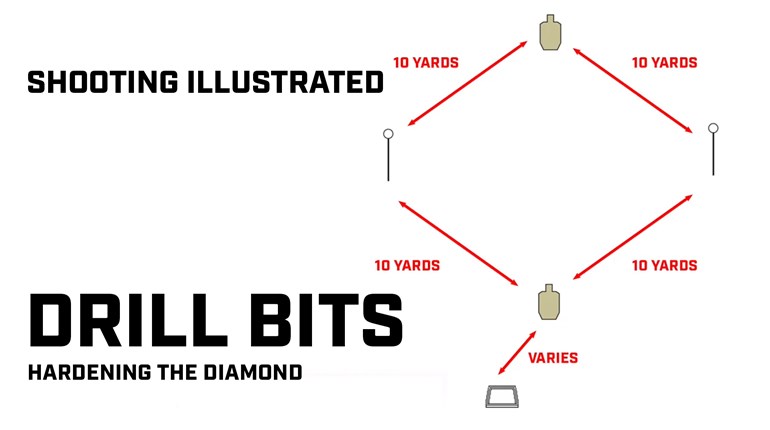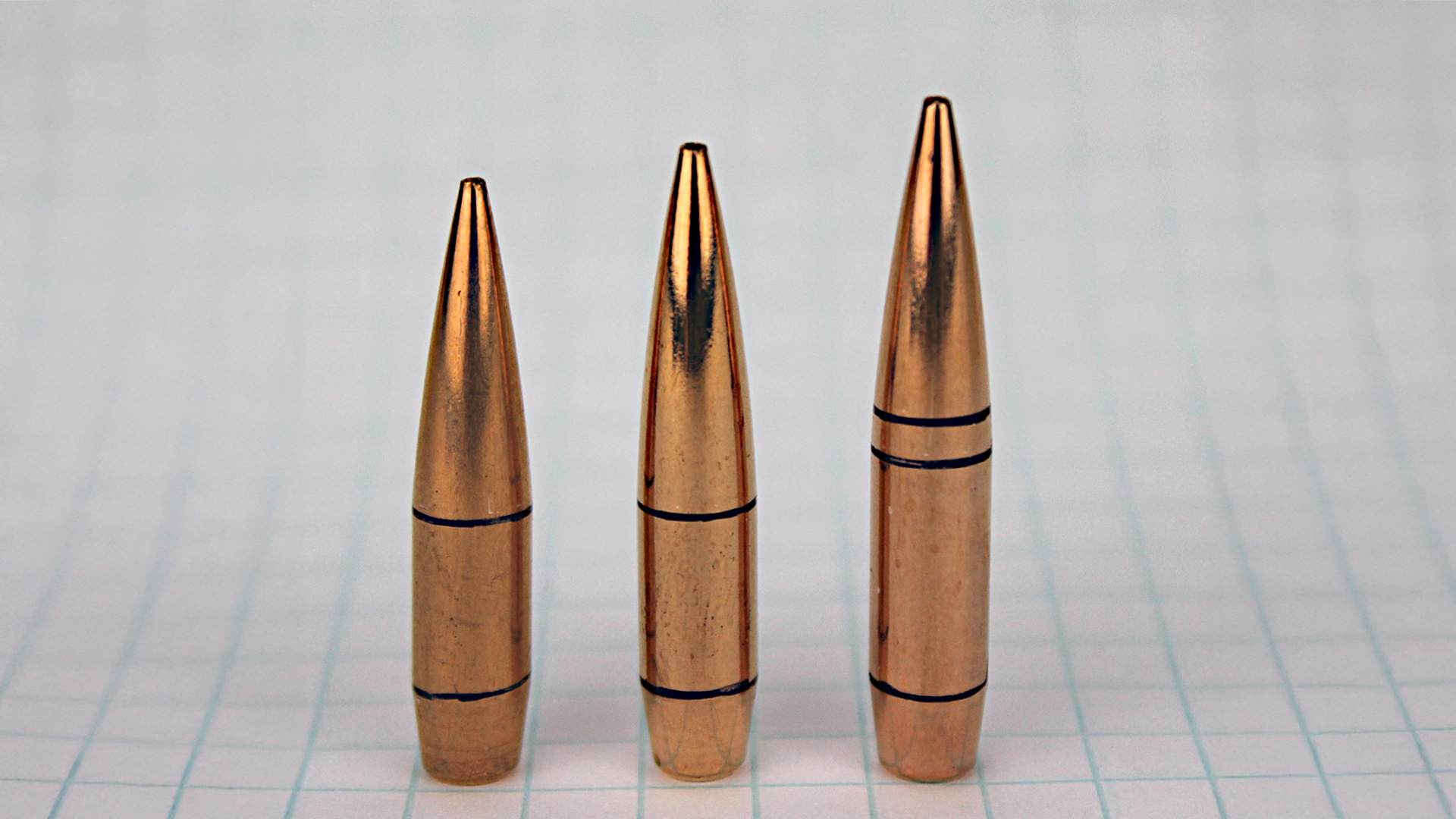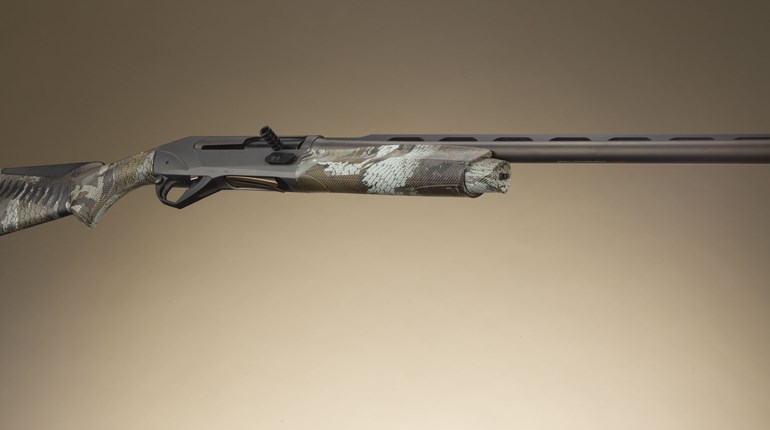
There is a lot that goes into running a successful Steel Challenge match. With the tips in this article, it should help make that first match easier. Some of the steps you may already have done, but what I’m covering here is how to go from waking up in the morning and saying, “I’d like to run a Steel Challenge match,” through the final step of paying the activity fee for your match. You will need to be an affiliated club, and if you have a USPSA club, the Steel Challenge club can be affiliated for no extra charge. (If you need to start a club, go to this link for instructions on how to become an affiliated club.)
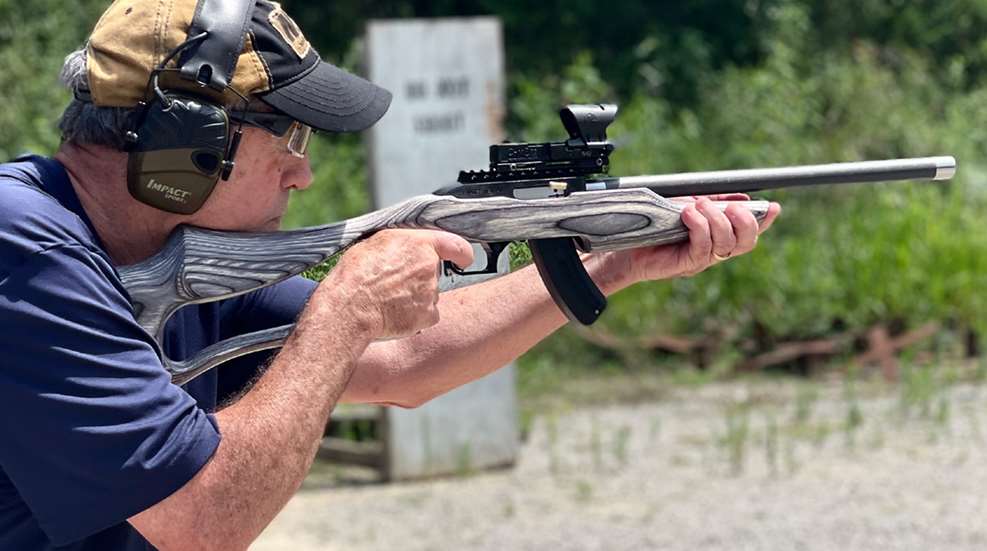
Now you need to find a range where you want to hold your match. Most of us have a range where we shoot, but is the range capable of holding a Steel Challenge match? Be sure to familiarize yourself with the eight Steel Challenge stages, as there are varied footprints required to set the stages up properly. To have a sanctioned match, you must run at least two of the eight stages. Five of the stages—Five to Go, Smoke and Hope, Accelerator, The Pendulum and Roundabout—will fit in a footprint of 12 yards wide by 20 yards deep. Showdown will fit in a 10 yard by 25 yard footprint. The longest stages are 35 yards deep, with Speed Option requiring 14 yards of width and Outer Limits requiring six yards. One of the things we ran into at the Wyoming Antelope Club was that while our bays are 15 yards wide by 20 yards deep, we don’t have berms, but dividing walls. To run Smoke and Hope, we created swing-out AR500 panels so when misses happen, they hit the AR500 and not the cement dividing walls. When evaluating the bay size, keep in mind where the misses will travel.
The next step is to get your steel. There are a number of manufacturers of Steel Challenge targets. I prefer the steel where the hanger is not permanently attached to the plate, as it’s cumbersome to store and doesn’t always “ring” as well. To be able to shoot the eight stages in steel challenge, you’ll need to purchase 10 10-inch circles, 19 12-inch circles and 11 18-by-24-inch rectangles. You will also need 40 stands to hold the two-by-fours that support the steel. When purchasing your set, take into consideration where it will be stored. Stands that don’t interlock when stacked will require more space to store them. Sometimes people forget they’ll also need 10 tables for competitors to stage their guns and magazines. Wait, it’s eight stages, so why 10 tables? Both Showdown and Outer Limits have multiple shooting positions, increasing the table needs from eight to 10. You’ll also need eight three-by-three shooting boxes and three four-by-four shooting boxes. Check the rules to determine the size of the box you’ll need. Metal boxes will last longer, but PVC pipe works equally well.
So now you have your range, the bays picked out and you have your steel, so your match has what it needs to be on the ground. What you need now are your scoring tablets and timers. I have my preferences, as do many match directors, on which tablet and timers to purchase. For tablets, regardless of the brand, you want a tablet that is big enough for people to see and has a battery life for the whole match. Timers don’t need to be Bluetooth enabled, but I will add that it’s much more accurate and efficient when they have Bluetooth. One button press on the tablet and the score and splits are recorded. Without Bluetooth, you don’t get the splits, and the scorekeeper has to enter the time manually. Once you have your tablets, go to the appropriate tablet store and download Practiscore (not competitor or log, just Practiscore). This link is a tutorial for creating an account and setting up a match. Since this is a new match, I recommend social media for promoting the match. Be sure to include a link to the match, making it easier for people to register.
Now it’s time to put the stages you are shooting on the ground, and involving a crew of volunteers will help immensely. Can you do it all on your own? Yes, putting the stages on the ground is not rocket science, but it’s five plates, stands and sticks that need to be placed in a specific configuration for each stage in your match. One person assisting you cuts the work in half, and three assisting gives you two teams of two to work together. If at all possible, try to give your helpers an incentive with a discount on the match. You really can’t have enough help, especially if they consistently are there for every match.
Each stage has a specific layout. Consideration should be taken to where you place the plates on the bay. If you have a 35-yard deep bay, and place Roundabout (which has plates at 15 yards) at the top/mouth/uprange location, it’s very different than if it’s downrange close to the back berm. I recommend that the stages be set up so the farthest shots are as close to the back berm as possible and as far left or right in the bay based on the stage. As much as possible, have the stages set up parallel with the side berms. If you cannot do this, then cant them; having them in the match is the ultimate goal. You’ll need a tape measure that will go to 40 yards, and start measuring.
Once you’ve determined where in the bay the stands will be placed, if at all possible, mark the positions with something permanent. This will save you the time of measuring the distances at every match. Stick length is the next thing to consider. The layouts show that Pendulum has two plates at six feet, every other circular plate is at five feet, and the rectangles are at five feet six inches with respect to the shooting box. The challenge is that most bays are sloped to allow for drainage, so to make the correct height; sticks will be longer or shorter, depending on the slope angle. The SCSA rulebook (specifically rule 2.1) allows for a two-inch variance. If you want to be perfect, get a laser level and you’ll be able to have the plates set perfectly. When you’ve determined the proper stick height for each plate, write the height on the stick and note the height on the layout; again, this will help with future setup. Setting up the stages correctly is a big part of hosting a successful match and displays to the competitors that you’re serious about the match.
Pick one of the tablets as the master, or as many match directors choose, have a dedicated tablet as the master tablet. On the master tablet, you will also create the stages that are in the match. I won’t go into detail, as this is straightforward and can be figured out easily. Shooters are now showing up, so use the check-in feature of Practiscore on the master tablet to note they’ve shown up and paid for the match. During this process, verify the division/ class and double-check their USPSA/SCSA number (this will save headaches later on if it needs to be changed). When you close registration, delete the competitors that didn’t show up and sync the match to the other tablets. This does require a WiFi network that all of the tables can connect to. Now it’s time to ring some steel.
At the end of the match, sync all of the tablets with the scores back to the master and post them to Practiscore.com (you can do this only when you have internet access from the tablet). Next, go to scsa.org and under club resources, click the “Match Results Upload” link. Follow the instructions provided on the page. The last step is to pay for the match. If the match is not paid, the results will stay in a pending state and won’t count for competitor’s classification until it is paid.
While this may seem like a daunting task, it gets easier as you run more matches. Here are more things to note for running local matches:
- Have the stages set up per the stage diagrams, including the proper stick height.
- Start on time. If you’re doing set-up before the match, get to the range early enough so it’s done by the time you start checking in people.
- Build a crew of people to help, not only for set-up, but also for scoring. Having a deep bench of people you can rely on will save you headaches.
- Get the scores posted to Practiscore/SCSA as quickly as possible—preferably right after the match—and pay for it so it’s official.
Hopefully this article will help you in getting started with hosting Steel Challenge matches. Remember, the best compliment you can hear is, “I can’t wait for the next one.”
Article from the March/April 2024 issue of USPSA’s magazine.













